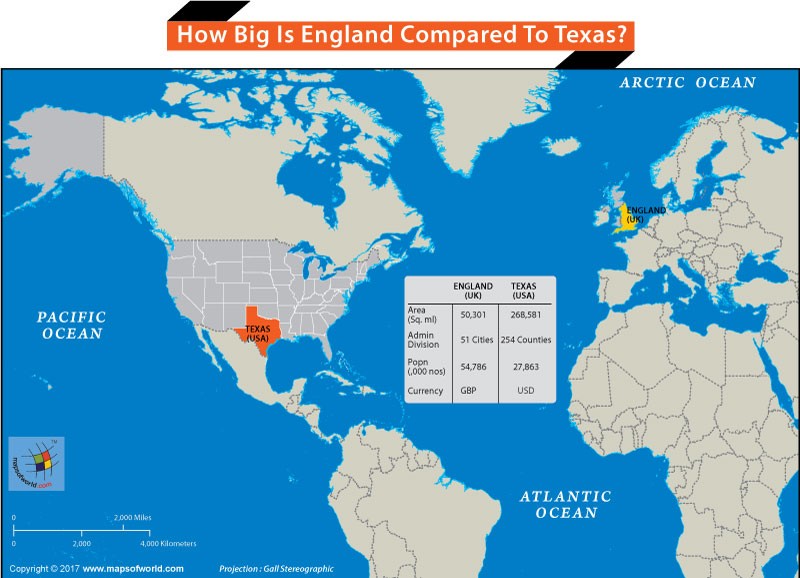England is significantly smaller than Texas. While England encompasses approximately 50,301 square miles, Texas sprawls across a much larger area of 268,581 square miles. This makes Texas roughly five times the size of England. To visualize the difference, picture Texas stretching 776 miles wide from east to west and 809 miles long from north to south.
 Comparison of England and Texas Size
Comparison of England and Texas Size
Geographic Context and Borders
England, a country within the United Kingdom, shares land borders with Scotland (96 miles) and Wales (160 miles). Its eastern and southeastern edge is defined by the English Channel, separating it from continental Europe. In contrast, Texas, the second largest U.S. state, boasts a substantial 1,951-mile international border with Mexico. Domestically, it borders Louisiana, Arkansas, Oklahoma, and New Mexico. Additionally, Texas has a 367-mile coastline along the Gulf of Mexico.
Population Differences
Despite its smaller size, England’s population (approximately 54,786,300 in 2016) is nearly double that of Texas (around 27,862,596 in 2016). Notably, 86% of the UK’s population resides in England, while Texas ranks as the second most populous state in the U.S., following California.
Demographic and Economic Comparisons
The ethnic makeup of the two regions also differs. England’s population in the 2011 census was primarily white (85.4%), followed by Asian (7.8%), Black (3.5%), mixed race (2.3%), Chinese (0.45%), and other ethnic groups (0.44%). The 2010 census in Texas indicated a majority white population (79.69%), with Black/African American (12.54%), Asian (4.73%), American Indian and Alaska Native (1.02%), Native Hawaiian and other Pacific Islanders (0.14%), and two or more races (1.88%) comprising the remainder.
Economically, England uses the Pound Sterling (GBP), while Texas, as part of the U.S., utilizes the U.S. Dollar. In 2015, England’s per capita GDP was approximately £26,160 (around $40,000 USD). Texas, in 2016, had a higher per capita GDP of $53,795, exceeding the U.S. average of $50,577. This disparity reflects differences in cost of living and economic structures. In conclusion, while population density is higher in England, Texas boasts a significantly larger land area and a higher per capita GDP.
